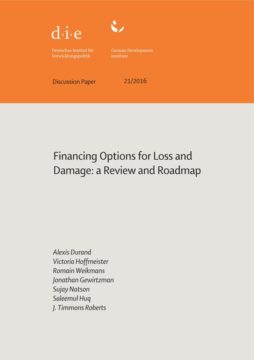Pressure to support responses to loss and damage under the United Nations Framework Convention on Climate Change (UNFCCC) has intensified in recent years. Loss and damage – an issue gaining prominence largely due to shortfalls of mitigation action and adaptation support – has never been officially defined under the UNFCCC. Here, the term “loss and damage” refers to irreversible losses (e.g. loss of life, species, land) and costly damages (e.g. destroyed infrastructure) caused, at least in part, by climate change.
Although loss and damage has been a subject of debate among Parties to the UNFCCC for years, the agreement reached in Paris was the first to devote a full article to loss and damage. In that article, Parties agreed to enhance “understanding, action and support” for loss and damage and to strengthen the Warsaw International Mechanism for Loss and Damage associated with Climate Change (WIM) (UNFCCC, 2015, Art. 8). In coming years, as climate change advances and Parties work to implement this and other directions from the Paris Agreement, it will prove more crucial than ever to support loss and damage response, especially should efforts to sufficiently scale up mitigation commitments and adaptation capacity fall short. Given mounting pressure to finance effective loss and damage response efforts, understanding of the Warsaw International Mechanism’s activities must be strengthened, and the question of how funding for loss and damage response might be raised and allocated must be widely considered. To these ends, this paper endeavours to answer two questions at the core of the emergent drive to fund efforts to address loss and damage.
- Veröffentlicht am Sonntag 24. November 2024 von Deutsches Institut f. Entwicklungspolitik
- ISBN: 9783960210115
- 29 Seiten
- Genre: Gesellschaft, Politik, Sachbücher, Wirtschaft
